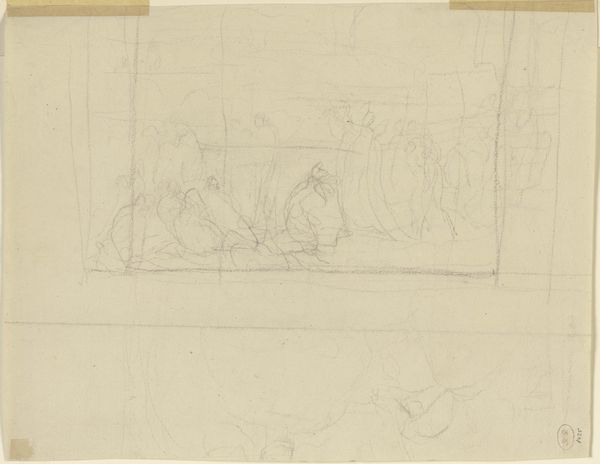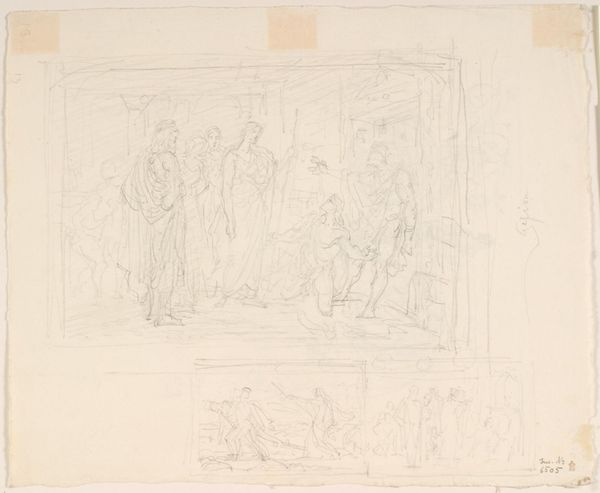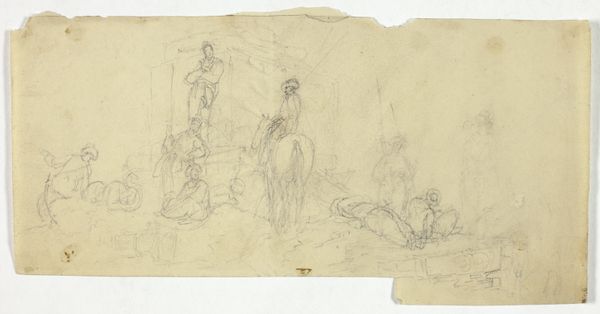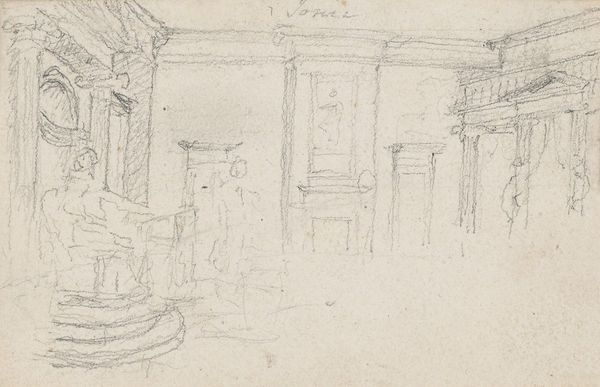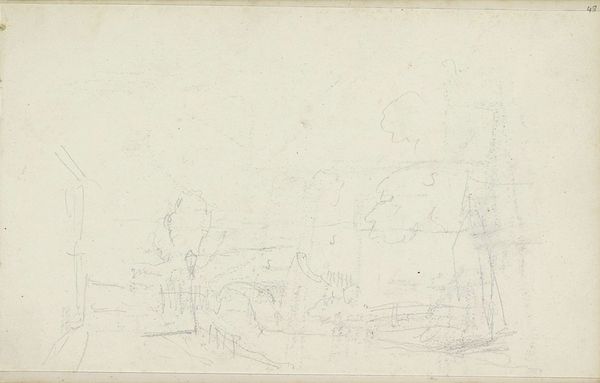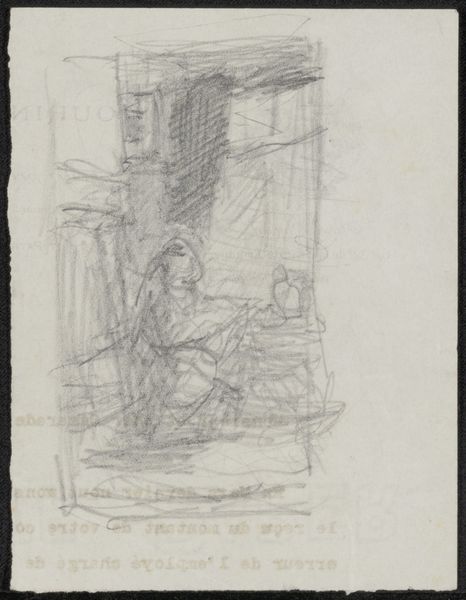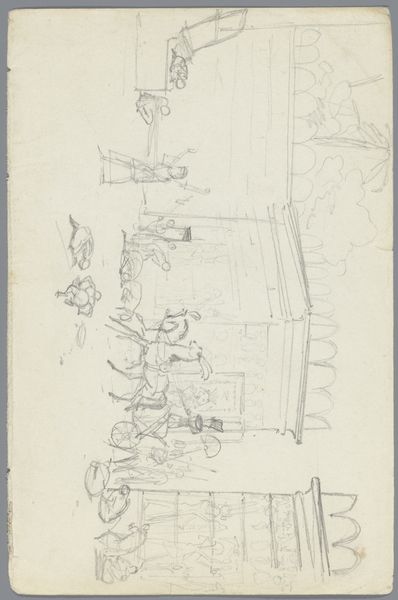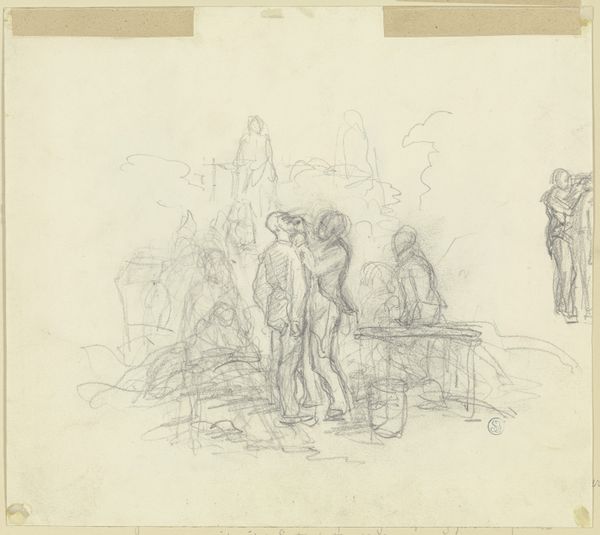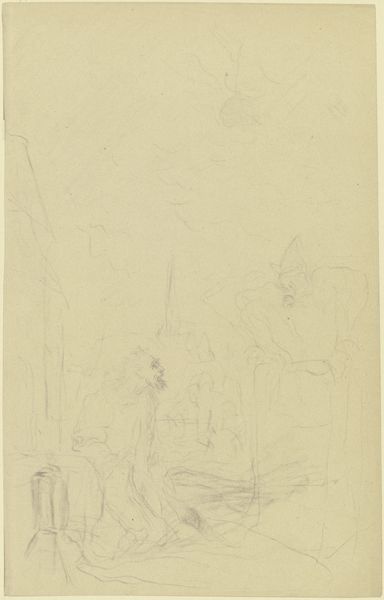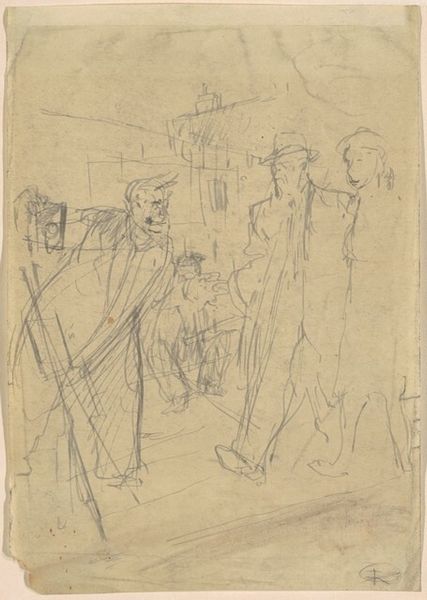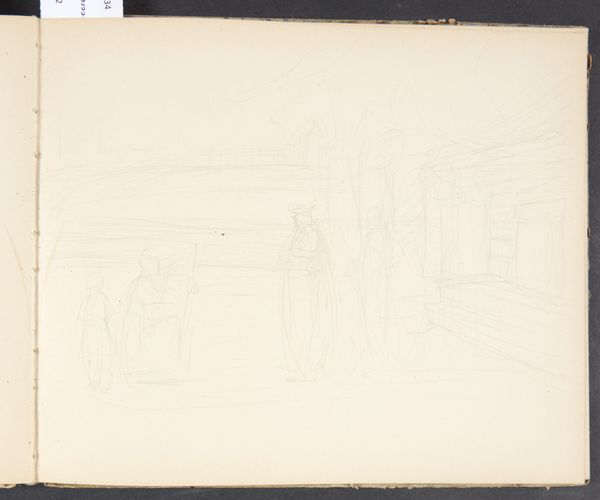
drawing, paper, pencil
#
drawing
#
landscape
#
figuration
#
paper
#
sketch
#
romanticism
#
pencil
Copyright: Public Domain
Curator: Looking at "The Walk in the Garden" by Peter Cornelius, created around 1810-1811, we see a landscape scene rendered delicately in pencil on paper, currently held at the Städel Museum. Editor: Ah, it feels like a half-remembered dream! There's a hazy quality to it, like viewing figures through frosted glass, very soft and indistinct. Curator: Indeed. It is fascinating how Cornelius used a seemingly simple medium—pencil—to evoke such an atmospheric scene. The materiality speaks to the accessibility of art creation at the time, reflecting a shift toward more personal and readily available means. The use of paper is itself significant, moving away from grand, monumental artworks to smaller, intimate works. Editor: I agree, it's incredibly intimate. A fleeting moment, sketched as quickly as possible. The figures almost seem to melt into the garden around them. Were they even there, or a phantom of the imagination? And the lack of crisp definition—does that invite us to project our own stories onto the scene? It feels more like capturing an essence. Curator: I think that's quite right. And perhaps not incidentally. We could look at how the very *act* of sketching emphasizes the labor of creation itself, underlining Cornelius’ role as both observer and participant. Also, let's not disregard the possible impact of industrial developments on artistic material production. Availability influenced technique, allowing more personal reflections, as you've noted. Editor: Right! I do wonder about those figures, though, clustered as they are, but still so isolated from one another in affect. Maybe this dreamscape echoes the social unease of the period – the rise of industrialization beginning to isolate individuals? This isn't simply about a pretty garden anymore. Curator: Your insights regarding social unease are provocative, offering a compelling lens for interpreting the artwork’s mood and context, especially with the emphasis that Cornelius seemed to assign toward figuration itself within that landscape.. Editor: Well, that’s just what struck me! Now I'm even more curious. Curator: Me too. It's fascinating to see how revisiting the work while considering the historical context adds more dimension to what it means and implies.
Comments
No comments
Be the first to comment and join the conversation on the ultimate creative platform.
